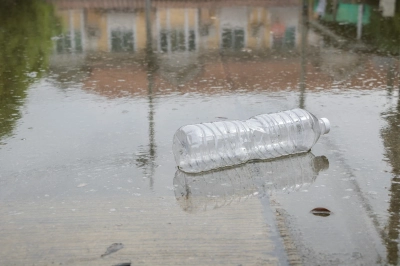A Step-by-Step Guide to SWPPP Inspections in Texas

Why SWPPP Inspections Matter
In Texas, construction sites disturbing one acre or more must implement a SWPPP to control erosion, sediment, and pollutants. The TCEQ requires routine inspections to verify that Best Management Practices (BMPs) are functioning and the site complies with the TPDES permit. Inspections also help identify issues before they lead to violations, especially during Texas’s unpredictable weather, from Houston’s heavy rains to West Texas’s flash floods.
Follow these steps to conduct thorough SWPPP inspections and keep your project on track.
Step 1: Review Your SWPPP
Before inspecting, familiarize yourself with your site’s SWPPP. This document outlines:
- Site-specific BMPs (e.g., silt fences, sediment basins, vegetative cover).
- Inspection schedules (typically every 7 days and after rain events of 0.5 inches or more).
- Roles and responsibilities for the inspection team.
- Ensure your SWPPP is up-to-date and accessible on-site, as TCEQ auditors may request it during a visit.
Tip: Use a checklist based on your SWPPP to streamline inspections.
Step 2: Train Your Inspection Team
Designate qualified personnel to conduct inspections. In Texas, inspectors should be trained in SWPPP requirements and TCEQ regulations. Training ensures they can:
- Identify failing BMPs (e.g., damaged silt fences).
- Assess erosion and sediment control effectiveness.
- Document findings accurately.
Tip: InstaSWPPP offers resources with our SWPPP plans to train your team on compliance. Explore our solutions at https://instaswppp.com.
Step 3: Conduct the Inspection
Walk the entire site, focusing on:
- BMP Condition: Check silt fences, check dams, and other controls for damage or sediment buildup.
- Erosion and Sediment: Look for signs of soil displacement or runoff entering waterways.
- Stabilized Areas: Verify that seeded or covered areas are intact.
- Pollution Prevention: Ensure no chemicals or debris are exposed to stormwater.
Important: Inspections must occur at least every 7 days or within 24 hours of a qualifying rain event, per TCEQ rules.
Tip: Use a mobile app or drone for large sites to document conditions efficiently.
Step 4: Document Findings
Record all observations in a detailed inspection report, including:
- Date, time, and weather conditions.
- BMP status and any deficiencies.
- Photos of issues and corrective actions.
- Inspector’s name and signature.
Important: TCEQ requires records to be kept for at least three years and available during audits.
Tip: Maintain digital backups to simplify record-keeping.
Step 5: Address Issues Promptly
If deficiencies are found, take corrective actions immediately, such as repairing silt fences or adding sediment traps. Update the SWPPP if new BMPs are implemented. Notify the TCEQ if significant issues could impact compliance.
Tip: Schedule follow-up inspections to confirm repairs are effective.
Step 6: Prepare for TCEQ Audits
TCEQ may conduct unannounced inspections, especially after complaints or major rain events. Ensure your SWPPP, inspection reports, and BMPs are audit-ready. A well-maintained site and thorough documentation can prevent fines, which can exceed $10,000 per violation.
Tip: Partner with InstaSWPPP.com for SWPPP plans that include audit-ready templates. Visit us to learn more.
Effective SWPPP inspections are the backbone of stormwater compliance in Texas. You can avoid these penalties and protect Texas’s environment by following these steps: reviewing your SWPPP, training your team, inspecting thoroughly, documenting findings, addressing issues, and preparing for audits.
Step 7: Partner With Us (The Most Important Step)
Contact us today! We want to make you the next SWPPP Success Story.
Need help with SWPPP inspections?
Let us simplify the process with our tailored SWPPP plans, designed to keep your project compliant and audit-ready. Visit https://instaswppp.com to explore our solutions and start your next inspection with confidence!
Home > Articles > A Step-by-Step Guide to SWPPP Inspections in Texas

